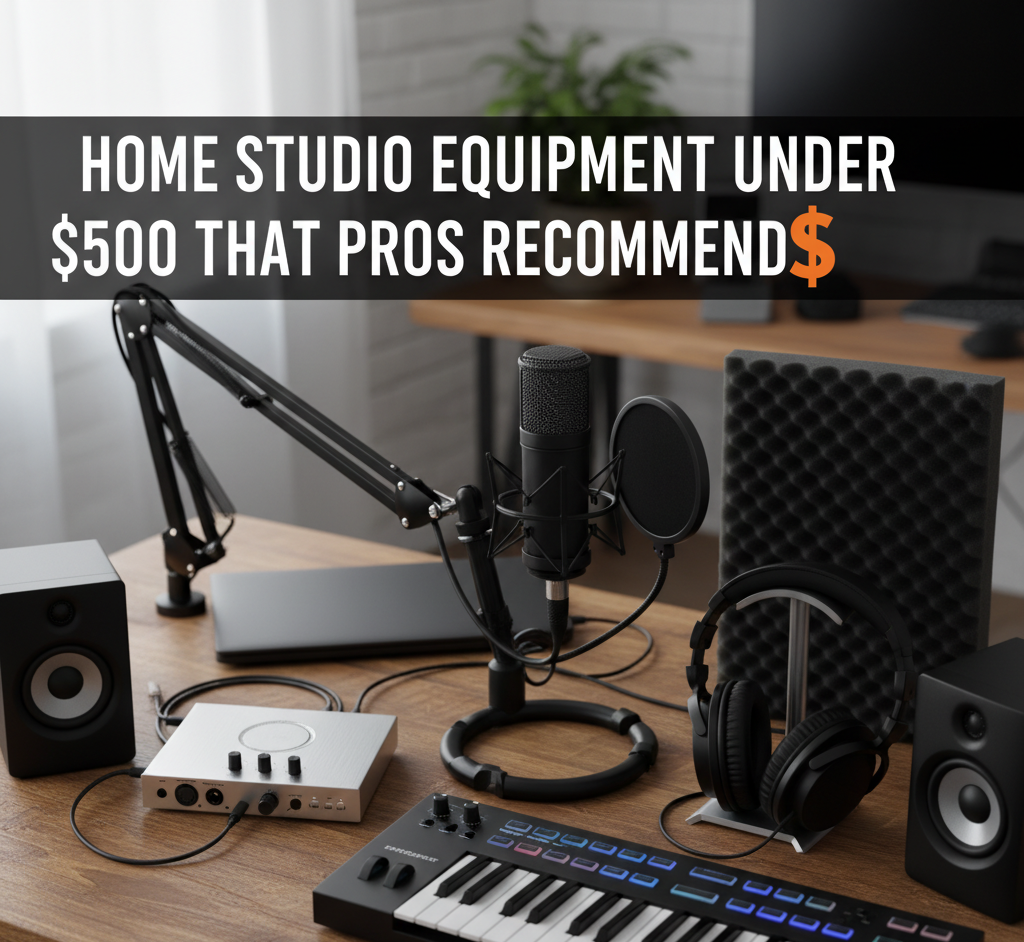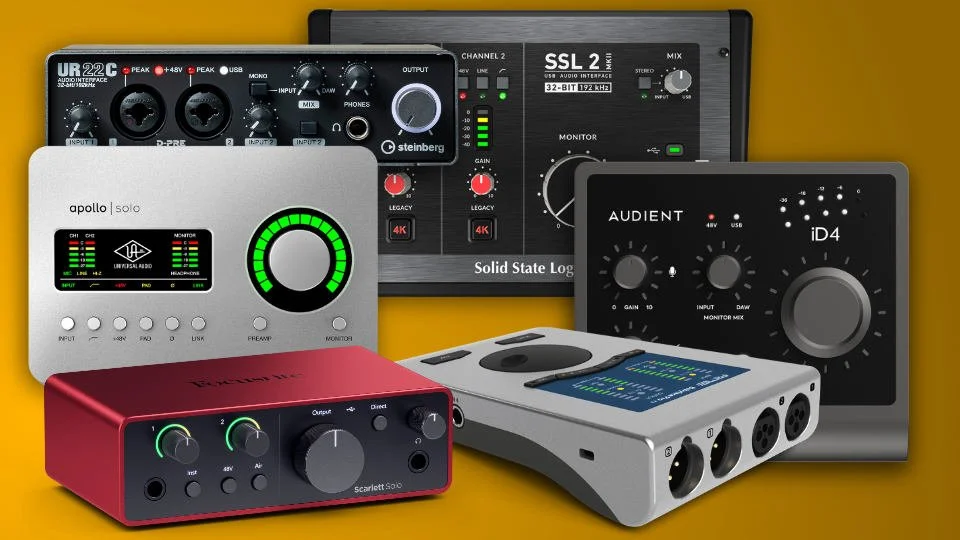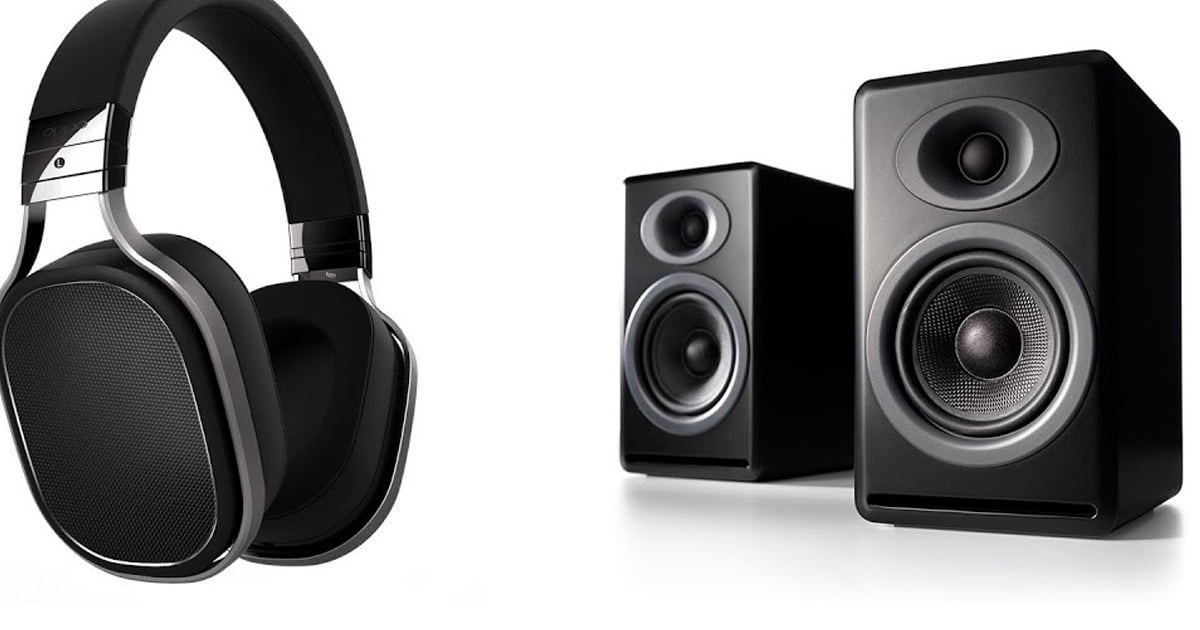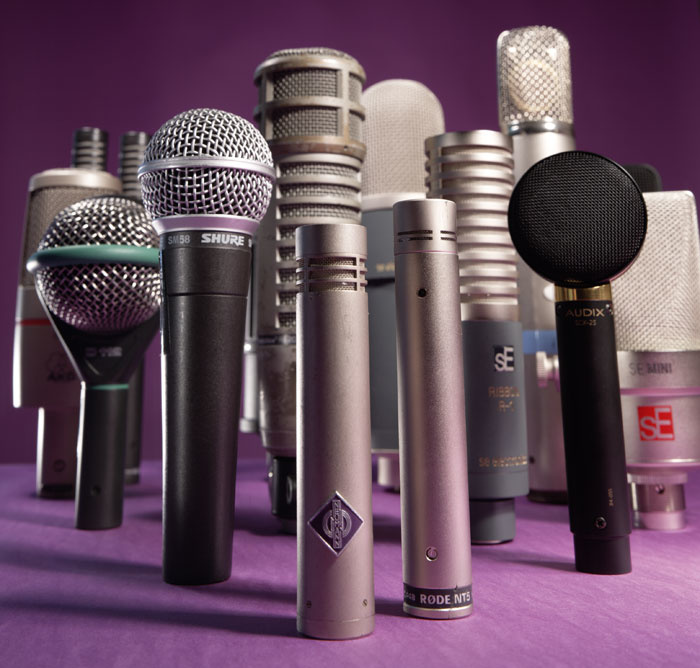Ready to build or upgrade a home studio without breaking the bank? Many successful audio engineers and producers agree that you can get most of what you need for under $500, as long as you invest smartly. Below, we’ll go through key pieces of equipment pros recommend on a budget, what to look for, and a few product suggestions.
What Matters Most in Budget Studio Gear
Before listing gear, let’s cover the criteria that make inexpensive equipment sound like pros recommend it:
-
Good preamps / low-noise mic inputs — the cleaner your signal chain, the less you need to fix later.
-
Accurate monitoring (headphones or speakers) for mixing; clarity is more important than “color” at first.
-
Solid build & durable components — cheaper doesn’t mean fragile.
-
Useful features (phantom power, hi-Z input for guitars, enough I/O) balanced with simplicity.
-
Support and firmware/drivers (especially for interfaces) so the gear keeps working well with OS updates.
The Core Pieces You’ll Want (and Why)
Here are the essential studio building blocks, what to look for in each, and all while aiming to stay under or around $500 per item.
| Type of Gear | What to Look For | Why It’s Important |
|---|---|---|
| Audio Interface | 2 good mic preamps, phantom power, USB/USB-C bus power, low latency drivers | This is the heart: converts analog to digital and vice versa without adding noise. |
| Microphone(s) | Dynamic for untreated rooms (less sensitive), condenser for vocals/instrument details; good SPL handling | Different sources need different tools; cheap mics often limit what you can record well. |
| Monitors or Studio Headphones | Flat-ish frequency response, enough volume, good isolation or room control | You can’t mix well if you can’t hear what’s really there. |
| Mic Stands, Cables, Pop Filters, etc. | Decent build quality, reliable connectors | These often get overlooked, but bad cables or weak stands cost you time and signal quality. |
Specific Gear That Pros Recommend — Under $500
Here are some pieces of studio gear that consistently show up in pro setups, including specs, pricing, and where they shine.
Audio Interfaces
-
Focusrite Scarlett 2i2 (4th Generation)
Price: ~$219.99. B&H Photo Video
Specs: 2-in / 2-out USB-C, 69 dB gain range, ultra-low noise mic pres, hi-Z input.
Why pros like it: Very reliable, good sound, and enough inputs for most solo or duo tracking situations. Known for bundled software and a strong community of users. -
AKG D112 MkII (while technically a mic, its role in drum tracking makes it part of the interface/recording chain)
Price: ~$229.00. Swing City Music+1
Specs: Dynamic mic, designed for high SPL (drums, bass amps). New mount for flexible positioning.
Headphones / Monitoring
-
Sony MDR-7506 Professional Monitoring Headphones
Price: commonly under $100, depending on retailer. Sweetwater+2B&H Photo Video+2
Specs: Closed-back, 40mm drivers, 10 Hz–20 kHz frequency response, impedance ~63 Ω.
Why it’s trusted: Long-standing standard for recording and mixing in many studios, especially for vocals, field recording, and overheads. Very durable, good isolation, decent neutrality.
Microphones
-
Using a Dynamic Mic in Untreated Rooms (e.g. for vocals or amps): While specific models vary, pros often pick dynamic mics in situations where a condenser would pick up too much room noise. (The AKG D112 MkII cited above is one example for instruments.)
-
Shure MV7 — for podcasters / streaming / vocals where you want USB + XLR flexibility.
Key Feature: It’s a hybrid mic (USB/XLR), which gives flexibility for direct connection or through an interface.
Putting It All Together for Under $500
Here’s a sample balanced setup you might assemble, pulling from the gear above, staying under $500, and giving yourself a solid foundation:
-
Audio Interface: Scarlett 2i2 (4th Gen) — ~$220
-
Studio Headphones: Sony MDR-7506 — ~$100
-
Dynamic Mic: Something like a Shure SM58 or equivalent dynamic (note: if you go with something like the Shure MV7, budget accordingly) — ~$100–$250 depending on model
-
Accessories: Mic stand, XLR cable, pop filter — ~$30–$60
Even with a mid-range dynamic mic (~$200), this keeps you around $450–$500 total. And all parts are usable even when you upgrade later.
Common Pitfalls & How to Avoid Them
-
Space / Room Acoustics: Even great gear suffers in bad rooms. Use blankets, foam panels, or treat reflection points.
-
Overbuying the number of inputs you don’t need — more channels = more money + more complexity. Start simple.
-
Cheap cables & cheap power supplies can introduce hum, noise, or failure. Invest a little here.
-
Not checking driver / firmware support, especially for interfaces: sometimes what seems like bad sound is bad driver compatibility.
Pro Tips for Maximum Value
-
Bundles: Many companies bundle interface + headphones or mic + controller, often giving more than buying separately.
-
Sales & Second Gen/Refurbished Gear: You can often catch flagship gear or prosumer gear just under $500 if you wait for sales or look at manufacturer refurbished.
-
Use what you have: If you already own a decent mic or headphones, focus your budget on what’s missing (e.g. better interface or proper monitoring).
DAWs: Choosing the Right Software for Your Workflow
A DAW is your creative and technical hub—it’s where you record, edit, mix, sequence MIDI, apply effects, route audio, etc. The right one depends on your budget, style (e.g. live performance, bands, electronic, scoring), OS (Windows, macOS, etc.), and how deep you want to go. Below are tiers of DAWs—from free or low cost to pro level—that are recommended by audio pros, with features and trade-offs.
What to Look for in a DAW
When comparing DAWs, pros often evaluate:
-
Stability / driver & plug-in compatibility
-
Native plugin/instrument library
-
MIDI tools & editing flexibility
-
Audio track count, sample rate/bit depth support
-
Workflow options (linear + clip-based, live performance, etc.)
-
OS support & updates / community & support
-
Cost model (lifetime license vs subscription vs tiered editions)
How to Pick the Right DAW for You
Here are some practical decision steps:
-
Match DAW to Workflow — If you perform live or build based on loops, something like Ableton or Bitwig might empower you more. If you record bands / mics, something with strong audio track comping, routing, mixing (Cubase, Pro Tools, Studio One) may feel more natural.
-
Try Before You Buy — Most DAWs offer free trials or “lite” versions (e.g. FL Studio Fruity, Ableton Live Lite, etc.). Use those to test your own workflow (recording, mixing, rendering, stability).
-
Consider Total Cost of Ownership — Not just the sticker price. Think about required plugins, sample libraries, upgrade paths, compatibility, hardware demands.
-
Consider System Requirements & OS — Some DAWs are Mac-only (Logic, GarageBand), some are Windows or cross-platform; some have steeper RAM/CPU/GPU demands.
-
Support & Community — Tutorials, forums, user base make a big difference. If something breaks or you want to do something unusual, good documentation or user resources are extremely helpful.
DAW Comparison Table (2025) — Tiers, Features & Live Pricing
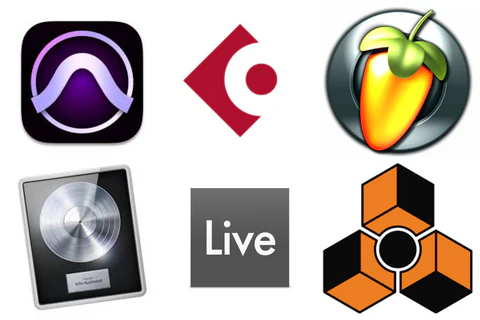
| DAW | Tier / Edition | Approx. Price* | Key Features in That Tier | Best For / Trade-Offs |
|---|---|---|---|---|
| Ableton Live | Intro | ~$99 USD | 16 audio tracks, 5+ GB of sounds; basic instrument/effects; track & scene limits. Ableton | Good for beginners & producers who want to try Live’s workflow without major investment. Less flexibility than higher tiers. |
| Standard | ~$439 USD | Full feature set: unlimited audio & MIDI tracks, more built-in effects/instruments; no “Suite”-level extras like Max for Live & biggest sound packs. Ableton+2TrustRadius+2 | Ideal if you want most of Live’s power without the full library cost. | |
| Suite | ~$749 USD | Everything: biggest sound & sample library, Max for Live, all instruments & effects included. Ableton+2TrustRadius+2 | For pros or those who want maximal creative possibilities. Heavier install size; higher cost. | |
| FL Studio (Image-Line) | Fruity Edition | ~$99 USD | Entry-level; some playlist / track limitations; no full audio recording in some low tiers. Lifetime free updates. flstudio.store+2FL Studio Download+2 | Good if your workflow is loop-/beat/ML style or if you’ll upgrade later. May miss features you’d want as projects grow. |
| Producer / Signature / All Plugins | ~$179-299+ USD depending on edition | More native plugins, instruments, effects; full audio recording & more advanced tools. Lifetime free updates still apply. FL Studio Download+2flstudio.store+2 | Mid-range users who want “one DAW to grow in.” All Plugins is more costly but gives more built-in tools. | |
| Studio One (PreSonus) | Artist | ~$99.99 USD | Almost full DAW features; lots of effects/instruments; fewer advanced features than Pro (e.g. routing, higher-end mixing/mastering options). PreSonus | Great choice for serious hobbyists or semi-pro setups. Upgradable. |
| Pro / Studio One+ | Subscription or permanent license for higher price (e.g. ~$179.99/yr for Studio One+ subscription) | Adds high-end mixing, advanced routing, immersive audio tools, more instruments & extras. PreSonus+1 | For those doing lots of projects, or needing pro-level mixing / mastering and advanced workflows. | |
| Pro Tools (Avid) | Artist / Studio (subscription) | ~$10/month (Artist) to ~$34.99/month / higher tiers depending on subscription. Engadget+2TrustRadius+2 | Standard recording / editing / mixing workflows; cloud collaboration; many supporting plugins; limitations in channel counts at lower tiers. | Widely used in professional studios; if you plan to work in post-production, film, large multitrack recording, Pro Tools helps with industry compatibility. Subscription model can be a con. |
| Logic Pro (Apple, macOS / iPad)** | Single full version | ~$199.99 USD | Full suite: instruments, effects, loops; no tiers; very large bundled sound library; good MIDI & audio editing; one-time purchase. Apple+1 | Excellent value if you are on Mac / iPad; no subscription; high quality stock tools. Not available on Windows. |
| Steinberg Cubase Elements | Elements | ~$99.99 USD | Basic audio & MIDI tracks; core mixing / editing tools; fewer bundled instruments than Pro version. Central Music+1 | Good for songwriting, smaller recording setups, or people who want Cubase scalable path. |
| Reason Studios | Reason+ (subscription) | ~$19.99 USD/mo or ~$199/yr | Access to Reason 12 / current version plus sound packs; subscription gives flexibility. help.reasonstudios.com+1 | Useful for those who prefer subscription/licensing over large upfront costs; you get latest updates. |
| Reason 12 (perpetual license) | ~$499 USD one-time | Full version with all included instruments/effects. Tekpon+1 | Best for long-term users who want ownership instead of subscriptions; higher cost but no recurring payments. |
*Prices are for U.S. non-sale periods, subject to change. Regional taxes, sales/events, or education pricing can reduce them significantly.
Wrap-Up
You can build a home studio that is respectable without dropping thousands. Focus your budget on the gear that impacts recording & monitoring quality most: a good audio interface, reliable headphones or monitors, and a suitable mic. Combine that with well-chosen accessories and attention to your recording environment, and you’ll be capturing clean, professional-grade tracks from day one.
